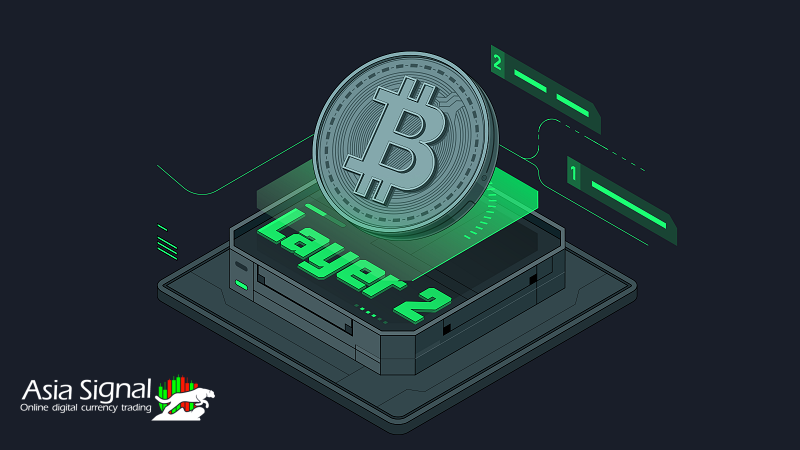Exploring Bitcoin Layer 2: A Solution for Scalability and Efficiency
In the world of blockchain technology, Bitcoin stands out as the pioneer, the first decentralized cryptocurrency that captured the imagination of millions worldwide. However, as Bitcoin gained popularity, it also encountered significant challenges, most notably scalability issues and high transaction fees. Enter Bitcoin Layer 2, a solution designed to address these challenges and unlock the full potential of the Bitcoin network.
Understanding Bitcoin Layer 2
Bitcoin Layer 2, often referred to simply as Layer 2 or L2, is a secondary protocol layer built on top of the Bitcoin blockchain. It aims to enhance the scalability, speed, and functionality of Bitcoin transactions without directly modifying the underlying blockchain protocol. Instead of processing every transaction on the main Bitcoin blockchain, Layer 2 solutions enable off-chain transactions, reducing congestion and improving efficiency.

The Need for Layer 2 Solutions
One of the most pressing issues facing the Bitcoin network is scalability. As the number of transactions processed on the blockchain increases, the network's capacity to handle them efficiently diminishes. This leads to longer confirmation times and higher transaction fees, making Bitcoin less practical for everyday transactions and limiting its mainstream adoption.
Layer 2 solutions offer a way to alleviate these scalability concerns by moving a significant portion of transaction activity off-chain. By conducting transactions off the main blockchain, Layer 2 networks can achieve higher throughput, lower latency, and reduced fees, all while maintaining the security and decentralization principles of Bitcoin.
Types of Layer 2 Solutions
There are several types of Layer 2 solutions, each with its unique approach to improving Bitcoin's scalability and efficiency:
1. Payment Channels: Payment channels, such as the Lightning Network, enable users to conduct multiple off-chain transactions without directly involving the Bitcoin blockchain. Transactions are settled on-chain only when the payment channel is closed, reducing the number of on-chain transactions and minimizing fees.
2. Sidechains: Sidechains are independent blockchains that are interoperable with the Bitcoin blockchain, allowing users to transfer assets between the main chain and the sidechain. Projects like Liquid utilize sidechains to facilitate faster and more confidential transactions, particularly for exchanges and institutions.
3. State Channels: State channels enable users to interact off-chain while preserving the security guarantees of the underlying blockchain. They are particularly well-suited for applications requiring frequent interactions, such as gaming and micropayments, by minimizing on-chain transactions and associated fees.
Advantages of Bitcoin Layer 2
Bitcoin Layer 2 solutions offer several compelling advantages:
1.Scalability: By moving transactions off-chain, Layer 2 solutions significantly increase the network's transaction throughput, enabling it to process a higher volume of transactions per second.
2. Speed: Off-chain transactions are processed much faster than on-chain transactions, allowing users to enjoy near-instantaneous payments and settlements.
3. Cost-Efficiency: Layer 2 solutions typically involve lower transaction fees compared to on-chain transactions, making Bitcoin more accessible and cost-effective for everyday use cases.
4. Enhanced Privacy: Some Layer 2 solutions offer improved privacy features, allowing users to conduct transactions with greater anonymity and confidentiality.
Challenges and Considerations
While Layer 2 solutions hold tremendous promise for improving the Bitcoin network, they also present certain challenges and considerations:
1. Adoption and Usability: Wide-scale adoption of Layer 2 solutions requires user-friendly interfaces and seamless integration with existing Bitcoin wallets and infrastructure.
2. Security Risks: Layer 2 networks introduce new security considerations, including the risk of channel breaches, routing attacks, and smart contract vulnerabilities, which must be carefully addressed to ensure the safety of user funds.
3. Decentralization: Maintaining decentralization and trustlessness is paramount in Layer 2 networks, necessitating robust governance mechanisms and incentives to prevent centralization and ensure network integrity.
Conclusion
Bitcoin Layer 2 represents a significant step forward in addressing the scalability and efficiency challenges facing the Bitcoin network. By leveraging off-chain solutions such as payment channels, sidechains, and state channels, Layer 2 networks offer faster, cheaper, and more scalable transactions while preserving the security and decentralization of the Bitcoin blockchain. As the development and adoption of Layer 2 solutions continue to evolve, they are poised to play a pivotal role in unlocking the full potential of Bitcoin as a global digital currency and payment system.
Asiasignal has collected the the best Crypto premium signal leaks for you.

















Comments